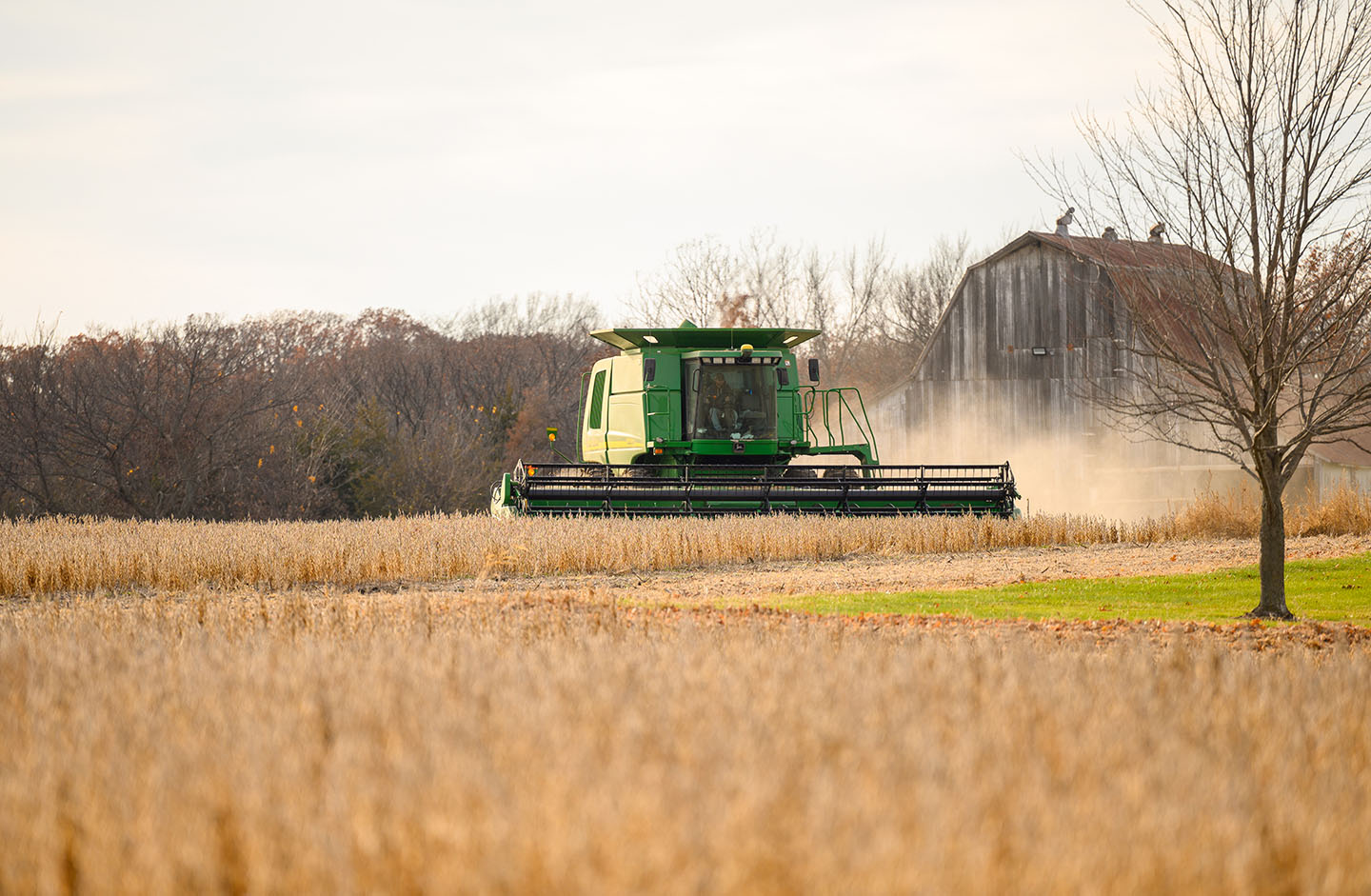
(Photo: Iowa Soybean Association / File Photo)
Expo highlights land prices and ag's future
February 1, 2024
Ag land prices are not going down anytime soon, but they may moderate a bit over the next few years.
That was part of the discussion during the recent Land Investment Expo in Des Moines. The Iowa Soybean Association was one of several sponsors of the event.
Farmers, landowners and investors gathered in Des Moines to hear from experts about what’s going on in the market and how that could impact all those who have a personal stake in the ground below us.
The cost of land
Presenter Bruce Sherrick, director of the TIAA Center for Farmland Research at the University of Illinois, says the farmland values come down to “the three I’s – interest rates, inflation and income.”
And while the last few years have seen an acceleration of farmland values, he says it’s not entirely clear what’s going to happen in 2024 and beyond.
“I’m as confused as I’ve ever been about where farmland markets are going,” he says. “I’m still very, very optimistic. I just don’t know quite what to do with the next couple of years … If we got a 5% pullback, I wouldn’t be surprised. If we get a 5% run up, I won’t be surprised. But in the long run, I won’t believe any story today that doesn’t include growing values of farmland.”
Brad Griffin, marketing director for AcreValue, told Expo audiences that the market landscape for ag and ranch land continues to rise.
“Land is not expected to decrease in value this year,” he says. “The reality is that land values have risen over the past three years. They won’t rise as dramatically, but they will increase this year.”
Robert Bonnie, the U.S. Department of Agriculture’s (USDA) Under Secretary of Farm Production and Conservation, says the ever-increasing value of farmland nationwide is good news for those who already own land and have the means to buy more.
But from a USDA standpoint, those prices can be a barrier for entry for young farmers and those with limited resources.
“We need to think more creatively how we use our loans and guaranteed loans to support young and beginning farmers,” Bonnie says. “We’re looking for ways to improve serving around our loans and the amount we can loan, streamlining the process.”
He adds that it’s a serious conversation that needs to be addressed with Congress in their discussions about a future farm bill.
Griffin says interest rates are one of the factors that has contributed to the increase in land prices.
“Interest rates are at the highest they’ve been since 1981, remaining at 5-1/4% to 5-1/2%,” he says. “Couple that with the increased debt on credit cards, plateauing wage gains, stagnation, diminished excess savings, higher home, vehicle and grocery bills - that is keeping most from buying land.”
The good news, he adds, is that interest rates and inflation numbers are expected to recede this year.
ISA At-large Director Aimee Bissell says while that is positive news, she remains concerned that barriers are still too high for many producers, especially young farmers, who don’t have the leverage to compete with wealthy landowners.
She says while the expo and the presenters offered several takeaways and ideas, she wonders if the vision amongst investors and farmers are the same.
“I sat in one meeting with mainly producers, and I sat in another meeting with mostly investors,” Bissell says. “It was like looking at the same industry but with two different sets of lenses. We both want a return on investment, but we want ours through sustainable practices. For investors, I don’t think that is their top priority.”
Agriculture’s future
Beyond land values, Bonnie says bolstering farmers and those in agriculture continues to be the focus for the USDA.
He says the department wants to see expansion of services that help protect farmers, like potential new offerings for crop insurance and providing more flexibility for producers like streamlining disaster programs services so that they work better for those on the farm.
Bonnie cited working farm loan programs for young farmers, veterans and historically underserved producers “so they can get into agriculture and stay there.”
He says new efforts toward biofuels remains a vital market for soybean and corn producers. “I’m particularly excited about the steps to increase incentives and expand markets including sustainable aviation fuel (SAF).”
Bonnie says agricultural interests and those focused on conservation need not be mutually exclusive.
USDA wants to see a voluntary incentive-based approach when it comes to ag production while at the same time improving the environment, including taking significant steps in revitalizing CRP programming, according to Bonnie.
“We know the concerns of Iowa farmers saying that could take valuable land out of production,” Bonnie says. “But we believe we can support production and conservation by focusing CRP enrollments on marginal acres and expanding grasslands.”
He says investment in conservation has dramatically increased over the last year - specifically $19.5 billion in added resources through the Inflation Reduction Act.
The USDA, he says, recognizes the value of conservation practices like cover crops and no-till, which benefits farmers and the climate.
That doesn’t mean there are not costs associated with those improvements. Bonnie says the USDA is supportive of incentives so that producers and landowners and move toward the continued production of food, fuel and fiber while reducing greenhouse grass emissions and more.
“We know there is skepticism out there in the countryside and we recognize the limitations,” he says. “But we believe in a voluntary incentive-based approach and working together.
“There is enormous potential for U.S. agriculture. The hope is to build a model that is strong for the environment and strong for rural America.”
Back